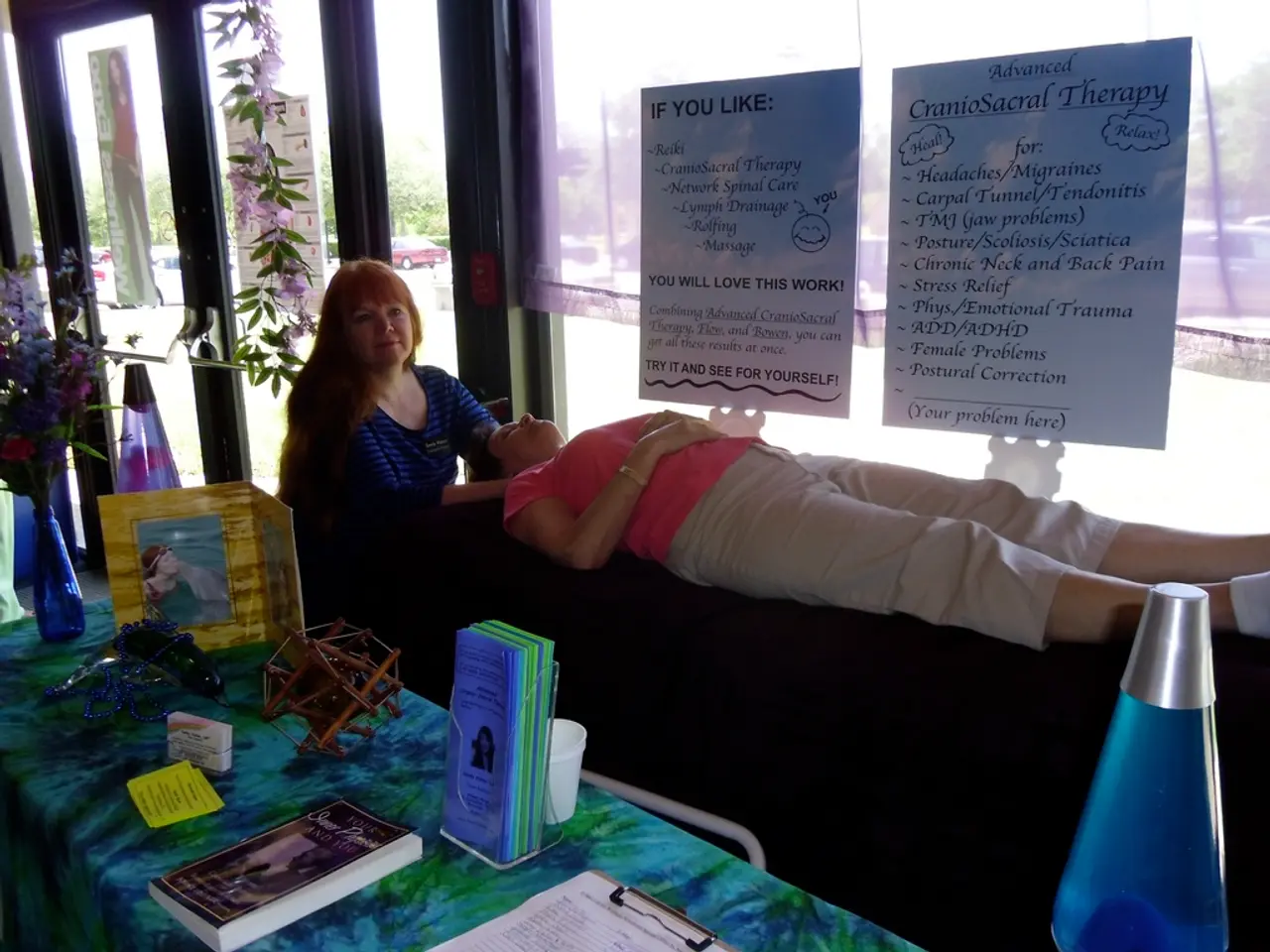Sensory Overwhelm in Individuals with Autism
Autistic individuals often face challenges in managing overstimulation, a state of sensory and emotional overload triggered by various factors such as noise, bright lights, textures, smells, social demands, visual clutter, crowds, unpredictability, and social interactions that require masking or suppressing autistic traits [1][3].
Signs of overstimulation may include increased irritability, increased sensory sensitivity, physical symptoms like headaches and nausea, difficulty focusing, difficulty processing information, feeling the need to escape or be alone, changes in speech, being unable to speak, increased self-stimulatory behaviors, feeling hot or uncomfortable, needing to cover eyes or ears, emotional outbursts, and reaching a meltdown point [1][3].
Social situations add an additional layer of complexity. Challenges like social expectations, conflict, miscommunication, or the emotional labor of masking (concealing autistic traits to fit in) increase emotional stress, which compounds sensory stress and contributes heavily to overstimulation [2][3].
To help manage overstimulation, creating sensory-friendly environments that minimize overwhelming stimuli and provide calming tools can be beneficial [4]. Recognizing and managing individual sensory triggers, as well as fostering inclusive social settings, are key to minimizing overstimulation and its negative consequences [1][5].
Some practical strategies for managing overstimulation include:
- Planning ahead: Planning can help reduce anxiety and better prepare for potentially overwhelming experiences [1].
- Excusing oneself: In overwhelming social situations or noisy environments, taking a few minutes to step away can help manage overstimulation [1].
- Establishing exit strategies or finish times: Having a plan to leave or end overwhelming situations can provide a sense of control and reduce stress [1].
- Providing opportunities for calming activities: Engaging in calming activities, such as mindfulness, sensory breaks, or low-intensity activities, can help support regulation for autistic individuals [4].
- Carrying a "sensory emergency kit": A kit containing items like sunglasses, earplugs, and comforting objects can help manage overstimulation in unexpected situations [1].
- Communicating needs: Sharing your sensory triggers and how others can help with them can lead to a more supportive environment [2].
- Using clear and calm communication: Avoiding complex language and encouraging alternative forms of communication can support someone experiencing overstimulation [1].
- Designated storage boxes: Keeping the environment organized can help reduce clutter and overstimulation [1].
- Well-ventilated spaces: Cool air and the ability to let out unwanted odors can help reduce overstimulation [1].
- Creating designated quiet spaces: Low-intensity areas for relaxing activities can help prevent overstimulation [1].
- Taking sensory-friendly activities during downtime: Engaging in calming activities during breaks can help prevent overstimulation and recalibrate the sensory system [1].
- Analog clocks and physical calendars: These can reduce digital overstimulation [1].
- Using smartphone apps to type out your needs: When speaking is difficult, apps can help communicate your needs effectively [1].
- Using colored badges or wristbands: Indicating current tolerance levels can help others understand your needs [1].
- Painting walls a dark or muted color: This can help reduce overstimulation from bright lights [1].
By understanding and implementing these strategies, autistic individuals and those around them can work together to create a more comfortable, less overwhelming environment.
Communication plays a crucial role in managing overstimulation, as using clear and calm communication can support someone experiencing overstimulation [1]. Mental-health, a significant aspect of health-and-wellness, is heavily impacted by overstimulation, as it can cause increased anxiety, emotional outbursts, and stress [1][3]. Psychology and the nervous system are closely intertwined, and overstimulation affects both, leading to changes in behavior, feelings, and the brain's ability to process information [1][3].
In adulthood, social situations add an additional layer of complexity to overstimulation, as social expectations, conflict, miscommunication, or the emotional labor of masking can increase emotional stress [2][3]. To help manage overstimulation in these situations, autistic individuals might find it beneficial to communicate their needs, plan ahead, excuse themselves, or carry a "sensory emergency kit" [1].
Science has shown that creating sensory-friendly environments, with well-ventilated spaces, designated quiet spaces, and organized environments, can help minimize overwhelming stimuli and reduce overstimulation [4][1]. Furthermore, engaging in calming activities or taking sensory-friendly activities during downtime can help prevent overstimulation and recalibrate the sensory system [1].
Understanding and implementing these strategies can help autistic individuals and those around them work towards creating a more comfortable, less overwhelming environment, thereby contributing positively to mental-health and overall well-being.




